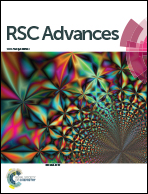Conductive conduit small gap tubulization for peripheral nerve repair
Abstract
Despite advances in surgical techniques, functional recovery following epineurial neurorrhaphy of transected peripheral nerves often remains quite unsatisfactory. Small gap tubulisation is a promising approach that has shown potential to traditional epineurial neurorrhaphy in the treatment of peripheral nerve injury. Thus, the goal of this study is to evaluate sciatic nerve regeneration after nerve transection, followed by small gap tubulization using a reduced graphene oxide-based conductive conduit. In vitro, the electrically conductive conduit could promote Schwann cell proliferation through PI3K/Akt signaling pathway activation. In vivo, the results of electrophysiological and walking track analysis suggest that the electrically conductive conduit could promote sensory and motor nerve regeneration and functional recovery, which is based on the mechanisms of selective regeneration and multiple-bud regeneration. These promising results illustrate electrically conductive conduit small gap tubulization as an alternative approach for transected peripheral nerve repair.



 Please wait while we load your content...
Please wait while we load your content...